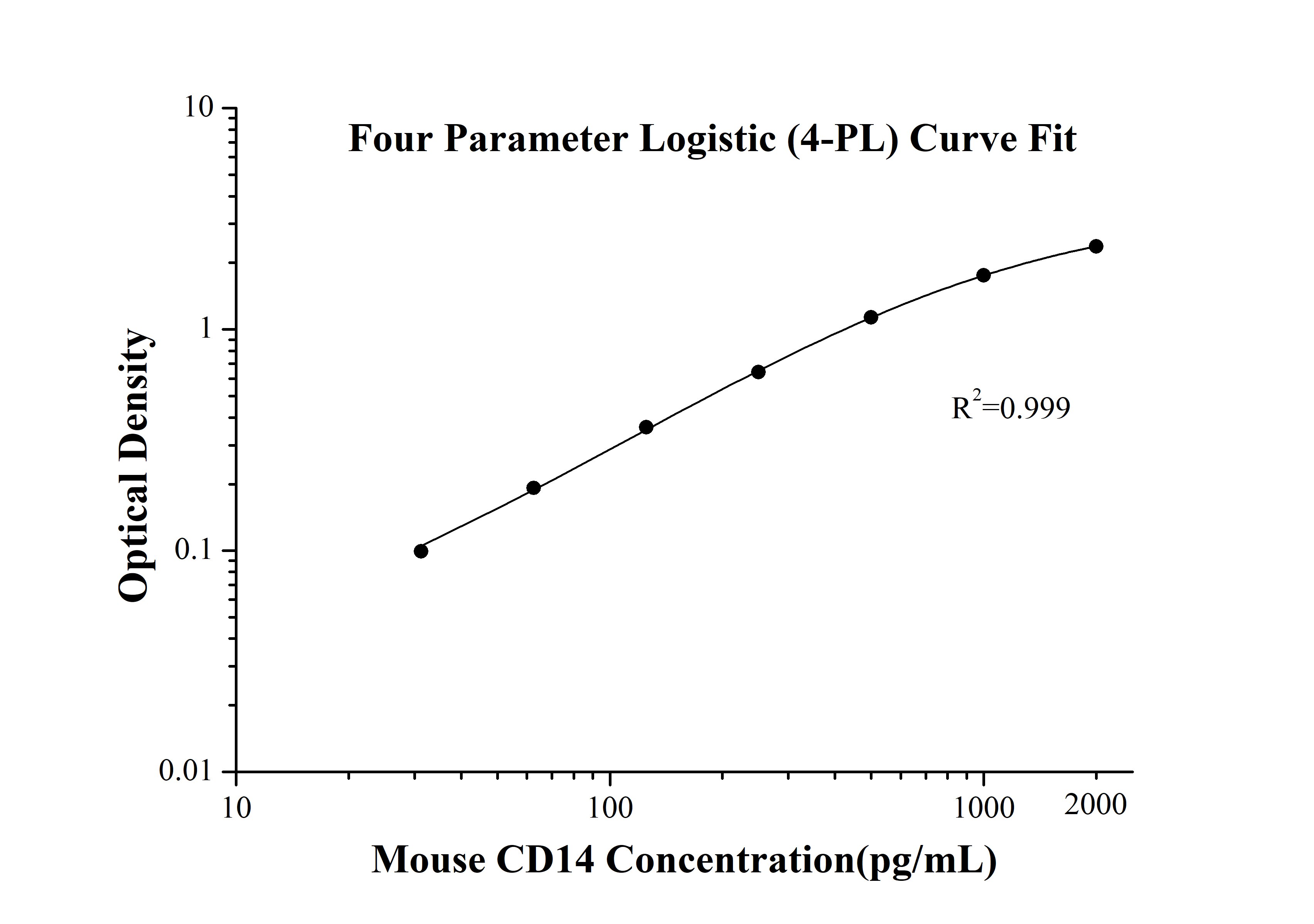Mouse CD14 ELISA Kit
Cat no : KE10113
Synonyms
Cd14, CD14 antigen
Validation Data Gallery
Product Information
KE10113 is a solid phase sandwich Enzyme Linked-Immuno-Sorbent Assay (Sandwich ELISA). The mouse CD14 ELISA kit is to be used to detect and quantify protein levels of endogenous mouse CD14. The assay recognizes mouse CD14. An antibody specific for mouse CD14 has been pre-coated onto the microwells. The mouse CD14 protein in samples is captured by the coated antibody after incubation. Following extensive washing, another horseradish peroxidase (HRP)-conjugated antibody specific for mouse CD14 is added to detect the captured mouse CD14 protein. For signal development, followed by Tetramethyl-benzidine (TMB) reagent. Solution containing sulfuric acid is used to stop color development and the color intensity which is proportional to the quantity of bound protein is measurable at 450 nm with the correction wavelength set at 630 nm.
| Product name | Mouse CD14 ELISA Kit |
| Tests | 1 X 96 well plate |
| Sample type | Serum, Plasma, Cell culture supernatant |
| Assay type | Sandwich |
| Sensitivity | 0.4 pg/mL |
| Range | 31.25-2000 pg/mL |
| Reactivity | Mouse |
| Tested applications | Sandwich ELISA |
| Gene ID (NCBI) | 12475 |
Recovery
| Sample Type | Average | Range |
|---|---|---|
| Mouse serum | 92% | 77%-117% |
| Cell culture supernates | 93% | 90%-96% |
IntraAssay
| Sample | n | mean ( pg/mL) | SD | CV% |
|---|---|---|---|---|
| 1 | 20 | 1,043.0 | 39.4 | 3.8 |
| 2 | 20 | 222.6 | 6.1 | 2.7 |
| 3 | 20 | 48.5 | 2.2 | 4.5 |
InterAssay
| Sample | n | mean ( pg/mL) | SD | CV% |
|---|---|---|---|---|
| 1 | 24 | 1,019.3 | 68.2 | 6.7 |
| 2 | 24 | 234.2 | 14.0 | 6.0 |
| 3 | 24 | 55.0 | 4.5 | 8.2 |
Background Information
CD14 is a 50-55 kDa glycosylphosphatidylinositol-anchored glycoprotein. CD14 is preferentially expressed on monocytes and macrophages. CD14 acts as a co-receptor (along with TLR4 and MD-2) for bacterial liposaccharides (LPS). It plays a major role in the inflammatory response of monocytes to LPS. Soluble forms of CD14 (sCD14) have been detected in cell culture supernatants and in human serum and urine, either shedded from the cell surface or released from intracellular pools. Increased release of sCD14 from monocytes is observed after stimulation with various agents, and sCD14 may therefore be a marker for activation of monocytes/macrophages.
Properties
| Storage Instructions | All the reagents are stored at 2-8℃ for 6 months or -20℃ for 12 months. Refer to the protocol for further storage instructions. |
| Synonyms | Cd14, CD14 antigen |
